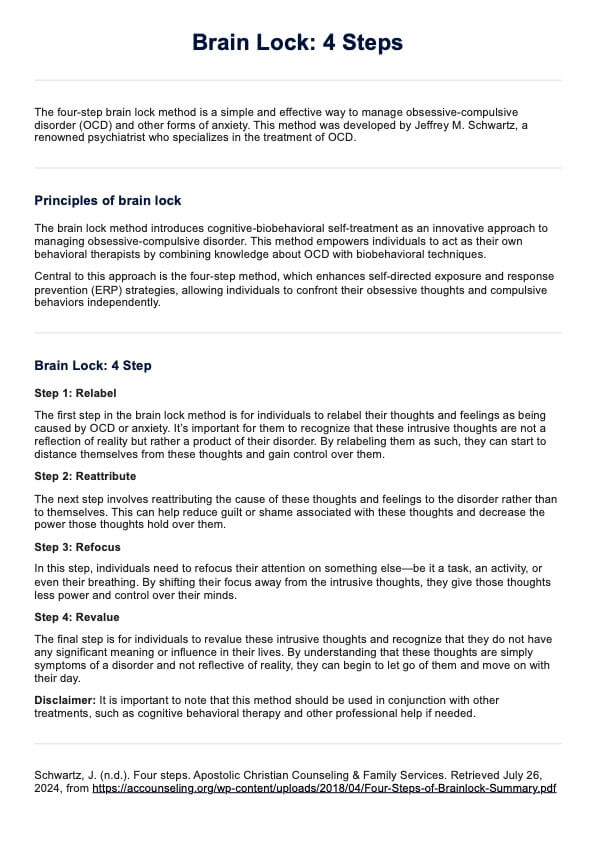The four steps in brain lock are: relabel, reattribute, refocus, and revalue.

Brain Lock: 4 Steps PDF
Our comprehensive PDF guide teaches you the 4-step brain lock method. Master techniques to help patients effectively overcome OCD and regain control.
Use Template
Brain Lock: 4 Steps PDF Template
Commonly asked questions
Obsessive-compulsive disorder (OCD) has four stages: obsession, anxiety, compulsion and relief.
EPR therapy is best done under the guidance of a trained therapist, but some people may choose to do it on their own with proper research and resources.
EHR and practice management software
Get started for free
*No credit card required
Free
$0/usd
Unlimited clients
Telehealth
1GB of storage
Client portal text
Automated billing and online payments











